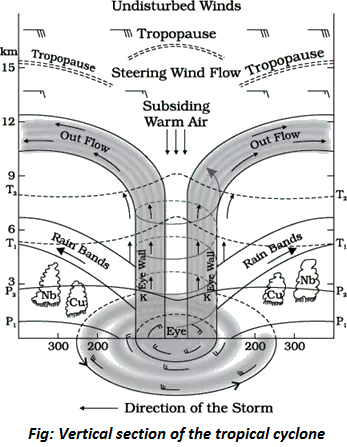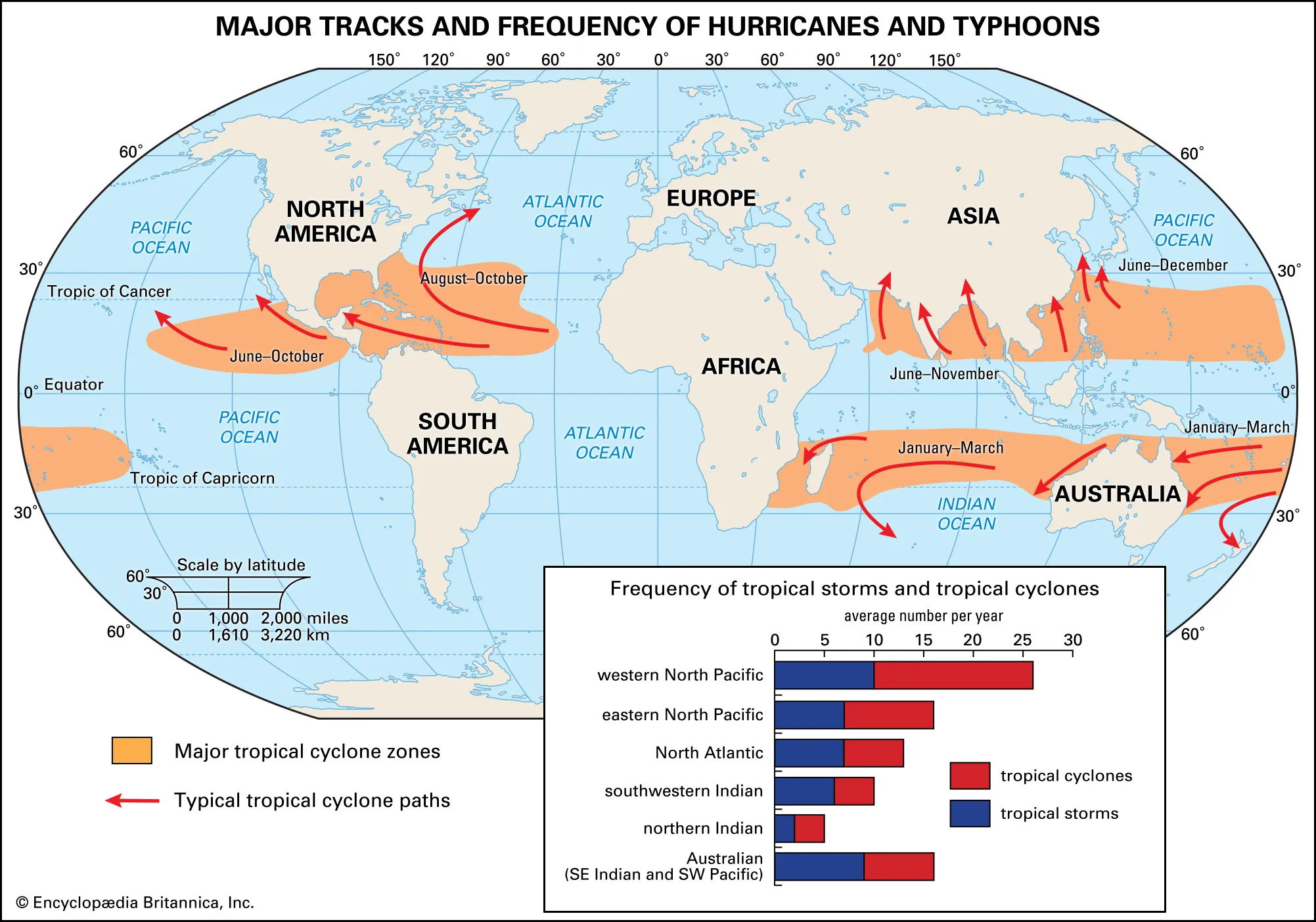-
19 Jul 2024
GS Paper 1
Geography
Day 11: Examine the geographical regions most susceptible to tropical cyclones and the reasons for their vulnerability. (250 words)
Approach
- Give a brief introduction to tropical cyclones.
- Highlight the geographical regions most susceptible to tropical cyclones.
- Examine the reasons for their vulnerability.
- Propose effective mitigation strategies.
- Conclude Suitably.
Introduction
Tropical cyclones, also known as hurricanes or typhoons depending on their location, are intense circular storms that originate over warm tropical oceans and are characterized by low atmospheric pressure, high winds, and heavy rain. Certain geographical regions are more susceptible to these storms due to a combination of climatic, oceanic, and geographical factors.
Body
Regions Most Susceptible to Tropical Cyclones
- North Atlantic Ocean
- Areas Affected: The North Atlantic Ocean, particularly the Caribbean Sea, the Gulf of Mexico, and the eastern coast of the United States.
- Examples: Hurricanes such as Katrina, Harvey, and Maria.
- Areas Affected: The North Atlantic Ocean, particularly the Caribbean Sea, the Gulf of Mexico, and the eastern coast of the United States.
- Northwest Pacific Ocean
- Areas Affected: The Northwest Pacific Ocean, including parts of Southeast Asia, Japan, and the western Pacific.
- Notable Examples: Typhoons such as Haiyan and Yutu.
- Areas Affected: The Northwest Pacific Ocean, including parts of Southeast Asia, Japan, and the western Pacific.
- Southwest Indian Ocean
- Areas Affected: The Indian Ocean to the east of Africa, including Madagascar, Mauritius, and the eastern coast of Mozambique.
- Notable Examples: Cyclones like Idai and Eloise.
- Areas Affected: The Indian Ocean to the east of Africa, including Madagascar, Mauritius, and the eastern coast of Mozambique.
- South Pacific Ocean
- Areas Affected: The South Pacific Ocean, including Fiji, Tonga, and parts of New Caledonia.
- Notable Examples: Cyclones such as Winston and Gita.
- Areas Affected: The South Pacific Ocean, including Fiji, Tonga, and parts of New Caledonia.
Reasons for Vulnerability
- Climatic Conditions
- Warm Ocean Waters: Tropical cyclones form over warm ocean waters with temperatures of at least 27°C. These waters provide the heat and moisture necessary for cyclonic development.
- High Humidity: High humidity in the lower and middle troposphere provides additional moisture, fueling cyclone intensification.
- Geographical Location
- Tropical and Subtropical Regions: Cyclones typically form between 5° and 20° latitude in both hemispheres, where sea surface temperatures are conducive to cyclone formation. Regions within these latitudes are most vulnerable.
- Ocean Currents: Warm ocean currents, such as the Gulf Stream in the North Atlantic or the Kuroshio Current in the Northwest Pacific, contribute to increased sea surface temperatures and thus cyclone activity.
- Low-Lying Coastal Areas: Coastal regions, especially those with low elevation, are more susceptible to storm surges and flooding caused by cyclones. For instance, the delta regions of countries like Bangladesh and Vietnam are particularly vulnerable.
- Atmospheric Conditions
- Low Vertical Wind Shear: Tropical cyclones require low vertical wind shear (the difference in wind speed and direction at different altitudes) to develop and sustain. High wind shear can disrupt the cyclonic structure, while low wind shear allows for its intensification.
- High Moisture Content: Areas with high moisture content in the atmosphere can support cyclone development and strengthen existing systems.
Mitigation Strategies
- Early Warning Systems: Developing and maintaining advanced meteorological systems for accurate forecasting and timely warnings to mitigate the impact of cyclones.
- Building Codes and Infrastructure: Implementing and enforcing stringent building codes to ensure cyclone-resistant construction, especially in vulnerable coastal and island areas.
- Coastal Protection: Constructing seawalls, levees, and other coastal defenses to protect against storm surges and flooding.
- Community Preparedness: Educating and training communities on cyclone preparedness, evacuation plans, and response measures to reduce vulnerabilities and enhance resilience.
Conclusion
The susceptibility of geographical regions to tropical cyclones is influenced by a combination of climatic, oceanic, and geographical factors. By addressing these vulnerabilities through early warning systems, resilient infrastructure, and community preparedness, the impact of tropical cyclones can be significantly reduced, protecting lives and property in vulnerable regions






